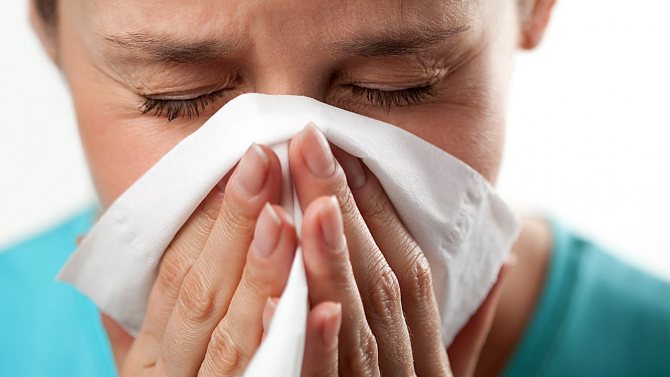Modern man lives in a world where something is constantly changing around him, and he needs to somehow survive. What exactly helps a person adapt to new conditions that in one way or another affect his life?
Without a doubt, one of the most important regulatory systems of our body is the nervous system. It is a kind of conductor for the whole organism, which connects us with the environment, organizing and streamlining the work of all internal organs and systems. Human perception of the environment occurs through the senses.
Our senses transform everything that happens into certain nerve impulses that are sent to the brain. Then our central nervous system analyzes the received signals and converts them into others, which in turn are responsible for the functioning of the human glands and muscles.
The endocrine glands, which belong to the endocrine system, work in the same way. After the glands receive a certain signal from the central nervous system, they begin to release hormones into the blood, which are biologically active substances that respond to and regulate the functioning of human organs. They influence and change both the speed of metabolic processes and other physiological functions. The endocrine system and the nervous system act together, making them dependent on each other in one way or another.
An equally important system in the human body is the immune system. Thanks to this system, our body is protected from hostile pathogens of various diseases, recognizing our own and foreign cells, preventing harmful viruses and infections from entering the body.
To put it simply, our immunity plays the role of “border guards” who must recognize and destroy enemy agents in the form of viruses and microbes. In addition, the immune system is responsible for the condition of the cells of our body. Thus, ordinary cells that, due to a number of reasons, have mutated into cancer cells must be immediately destroyed under the close supervision of our immune system.
Therefore, from this we can draw a small conclusion that thanks to our immune system, our body is protected from various viruses and bacteria, many different parasites, mutated cells, contributing to additional protection against cancer. Thus, the immune system reacts negatively to all foreign invasions, and even when transplanting organic tissues and organs to humans, rejecting them.
If there is a pathology of the immune system, then a person often gets sick and gets a whole bunch of chronic diseases, various allergies, increases the likelihood of developing cancerous tumors, and also ages prematurely, which has the most negative impact on his health.
Human immunity has three main features:
- It is distributed throughout the body and affects it in the most direct way.
- Immune system cells constantly move throughout the body through the human circulatory system.
- The immune system produces specific antibodies that are aimed at fighting certain antigens.

Immunity
Immunity is a collection of various human systems that are aimed at protecting and preserving the integrity of the entire body, protecting it from various foreign invasions of microbes, viruses and infections. Immunity is a general biological phenomenon. There is practically nothing the same in the immunity of humans, animals and plants, but all immune systems work according to the same principle, which connects them to the principle of operation in general.
Types of immunity
In turn, immunity is divided into two types - innate and acquired.
Innate immunity, as the name itself suggests, appears in a person from birth, thus protecting him in the early stages of life from various diseases. Innate immunity begins to form in the womb, giving us protection and the opportunity to be born. This type of immunity largely depends on maternal immunity, since it is thanks to the cells of the maternal immune system that the child develops innate immunity. And the stronger the mother’s immunity, the stronger it will be in the child after birth. Passed on by inheritance.
Acquired immunity is formed throughout a person’s life. This type of immunity is absent at birth, but it is developed during various diseases, which makes it an excellent protector against diseases such as chickenpox, rashes, influenza, and so on. Acquired immunity is individual for each person and is in no way inherited.

Causes of allergies
The mechanism of the immune response, triggered by contact with a provoking substance, is typical - that is, the same in all people and laid down in the process of evolution. But if in the case of infectious agents it is extremely clear why protective reactions are needed, the occurrence of allergies does not represent any practical benefit. Why then does a person begin to sneeze after tasting an orange or itch desperately after using a moisturizer? Experts describe different reasons for the formation of sensitivity.
The immune system
Like everything else in our body, the immune system is subject to various disorders. There are three types of immune system disorders:
- The first and one of the most common disorders is immunodeficiency. Immunodeficiency is a pathology of the immune system, a weakening of one link in the body system, which entails bad consequences. They develop after any severe viral illnesses, starvation, vitamin deficiency, mental and physical injuries, excessive constant overwork, premature aging, and so on. Immunodeficiencies are the main cause of increased sensitivity of the entire body not only to various microbes, but also to such a terrible disease as cancer. This explains the increasing trend of cancerous tumors in people with compromised immunity.
- The second type includes autoimmune disorders. Autoimmune disorders include a fairly large number of various diseases, including arthritis, lupus, anemia, kidney inflammation, diseases of the thyroid gland, cardiovascular and nervous system. At the moment, no one can say for sure the causes of autoimmune disorders; there are only various guesses. Many medical scientists agree on one thing - the number of autoimmune diseases is directly proportional to a person’s age; the older he is, the more there are. Thus, the conclusion suggests itself that aging can also be attributed to autoimmune diseases.
- The third, no less common type of disorder is allergies. Allergy is also a pathology of the immune system. Almost every person suffering from allergies of any type has their most vulnerable spot. Some people cannot tolerate pollen from any flowers, others suffer from household dust or ordinary cosmetics, and still others from any fruit or vegetable. Such disorders also tend to increase as a person ages. What is an allergy?

LiveInternetLiveInternet
Quote from the message Healer
Read in full In your quotation book or community!
Immunity and allergies. Immunity disorders. Man lives in a changing environment
, constantly interacting with her. What helps a person survive, adapting to constantly changing conditions?

The main regulatory system, of course, is the nervous system. This is the main conductor of our body, which ensures the relationship with the external environment, the harmonious and coordinated work of all internal organs and systems. A person perceives changes occurring in the external environment with the help of his senses. Incoming signals are converted into nerve impulses, which are transmitted through the nerves, like wires, to the brain. The central nervous system analyzes the signal and develops a response, which is realized through the activity of working organs (muscles, glands).
The endocrine glands (endocrine system), receiving a signal from the nervous system, release biologically active substances into the blood - hormones that regulate the functioning of internal organs by changing the rate of metabolic processes and physiological functions. The nervous and endocrine systems act in concert. The immune system ensures the biological integrity of the body; its task is “to recognize what is foreign and destroy it.” Figuratively speaking, the immune system, on the one hand, performs the functions of the border service of our body, preventing the penetration into the internal environment of not only pathogenic microbes, but also foreign cells and macromolecules. On the other hand, the immune system plays the role of the body's Ministry of Internal Affairs, monitoring the trustworthiness of its citizens - the cells. Degenerated cells, such as tumor cells, as well as “foreign” cells, must be destroyed. It is the immune system that provides immunity - protection from bacteria, viruses, parasites; elimination of dying and mutationally changed own cells; anticancer protection. The reactions of the immune system underlie the incompatibility and rejection of transplanted organs and tissues. Violation of its functions leads to the development of autoimmune diseases, allergies, cancer, and premature aging of the body. The immune system has three features: - it is generalized throughout the body; - its cells are constantly recirculated throughout the body through the bloodstream; - it has the unique ability to produce highly specific antibody molecules, different in their specificity in relation to each antigen. Immunity
is a way of protecting the body from genetically foreign substances of living and inanimate nature, aimed at preserving the integrity of the body and its biological individuality.
Immunity is a general biological phenomenon. Despite the fact that humans, animals and plants differ in the anatomical and physiological basis of immunity, the set of mechanisms and reactions of the immune response, the fundamental essence of immunity does not change. Types of immunity
There are two main types of immunity: innate (species) and acquired (individual).
Innate immunity is the same in all representatives of a certain species of living organisms, which is why it is also called species-specific. Human innate immunity is manifested in its immunity to many animal diseases (for example, canine distemper), on the other hand, and animals are immune to certain human pathogens. Innate immunity is hereditary and is passed on from one generation to another. Acquired immunity develops throughout life. This occurs during various infectious diseases or after vaccination. Acquired immunity is individual and is not inherited. The immune system
is a mechanism that, like everything else in the body, is susceptible to disorders.
There are three types of disruption. The first, the most common, includes the so-called immunodeficiencies - weakening of the functional contribution of one or another of its links to the overall actions of protecting the body. These immunodeficiencies develop as a result of viral infections, starvation, vitamin deficiencies, physical and mental trauma, overwork, etc. And of course, aging. Immunodeficiencies are becoming the main reason for increasing the body's sensitivity not only to microbes, but also to cancer - which is why the frequency of tumor diseases increases sharply. The second type includes autoimmune disorders. There are quite a few examples of autoimmune diseases: rheumatoid arthritis, systemic lupus erythematosus, and some forms of malignant anemia, diseases of the kidneys, thyroid gland, nervous and vascular systems... The causes of autoaggression have not yet been fully elucidated. This “blank spot” prompts us to build the most amazing hypotheses, including the hypothesis of aging, because with age the number of autoimmune diseases increases significantly. This gives us the right to assume that aging itself is an autoimmune disease. The third type of immune disorder is allergies. Every allergy sufferer has their own Achilles heel. One suffers from pollen, another from strawberries, a third from cosmetics or house dust, a fourth from bird fluff, etc. This disorder of the immune system also becomes more frequent with age. Allergy (from the Greek allos - different, ergon - I act)
is a state of increased sensitivity (sensitization) to substances with antigenic properties or even without them.
Currently, 30-40% of the population of developed countries is susceptible to allergies. The term “allergy” was introduced in 1905 by K. von Pirke to designate a special excessive reaction of the body to contact with an antigen. In 1902, Richet and Portier (Pasteur Institute) discovered the phenomenon of anaphylactic shock in an experiment on dogs. This was the beginning of allergology. Antigens that cause an allergic reaction are called allergens.
Types of allergens: • household (household book dust is a waste product of house mites); • epiallergens (hair, wool, skin, scales); • simple chemicals; • hay fever (plant pollen); • medicinal substances (antibiotics, sulfonamide drugs); • food allergens; • infectious allergens (antigens of microorganisms); • autoallergens (primary - antigens of cells of those organs to which innate immunological tolerance has not been formed (brain, thyroid and gonads, eye tissue; secondary - macromolecules of cells with an altered structure as a result of burns, radiation sickness, frostbite, etc.)) . 95% of people are allergic to one allergen, that is, they are monoallergenic. Children, as a rule, are polyallergenic. Diagnosing allergies is not difficult, but identifying the cause of the disease is much more difficult. If the allergen is found, then treatment is possible. The fight against allergies, which, according to many scientists, is a product of civilization and has a pronounced tendency to increase (31 million patients are registered in the USA alone) is a task of extreme importance. It’s not for nothing that allergic diseases, along with staphylococcal infections, are called “the disaster of the 20th century.” We all dream of preserving and prolonging our youth. As for aging, it is associated with the deterioration of immunological mechanisms. That is why the immune system is directly related to many diseases of old age. However, the question of whether diseases undermine normal immune functions or, on the contrary, the weakening of these functions to a threshold level predisposes to diseases remains open. Of course, with age, immunity loses its strength. This is primarily due to changes in the T-system caused by age-related involution of the thymus: its largest specific gravity at the time of birth. After that, it only decreases throughout its life. The number of T-lymphocytes in the blood is also gradually consumed. The decrease in T-system activity during aging appears to be under control, resulting from a genetically programmed failure of thymic function.
Allergenic products: gradation according to risk level

The invasion of allergic reactions and various forms of hypersensitivity to modern food substances has become a real disaster, so we must learn to recognize allergenic foods. UN statistics classify up to a quarter of the inhabitants of civilized countries, especially those living in industrial and densely populated areas, as an allergenic risk group. The reasons for this phenomenon are not only “problematic” ecology and “industrial” nutrition - the human environment itself is changing too rapidly and spasmodically for the body to have time to adapt. People who have a pronounced or hidden tendency to food allergies are simply obliged to navigate the gradations of allergens according to the degree of impact on the body. “High concentration” food allergens
Doctors and nutritionists include milk (not necessarily cow's), whole milk and cheese products as particularly aggressive and risky food products.
Eggs also pose a comparable allergenic risk. Also active risk factors are the consumption of smoked meats and preserves, especially those of non-homemade origin. At the slightest suspicion of an allergic reaction, nutritionists advise immediately eliminating such obviously allergenic products as black and especially red caviar, as well as many types and varieties of sea fish. Hypersensitivity to various seafood is especially common. Also in the zone of increased allergenic risk are many (most often brightly colored) fruits and berries - from citrus fruits and melons to the most “innocent” apples. Most dried fruits carry the same level of threat. Some aggressive allergenic products at first glance seem quite innocent and harmless - these include sauerkraut, sweet soda, yogurt, marmalade and even alcoholic drinks. Products of “average” allergenicity
Despite the conventionality of the gradations, it is possible to identify a group of food products with a pronounced danger of allergy, expressed primarily in a “mass” effect.
Such “average” allergenic products are widely used in home and industrial cooking, so it is worth knowing the most common ones. Let's start with dairy products (especially industrial ones): fermented baked milk, “live” yoghurts without dyes, biokefir and, of course, cottage cheese. The “average” allergic segment includes the vast majority of river fish and some varieties of ocean fish: mackerel, cod, perch. The same trend applies to pork (especially with a fatty layer), any lamb and horse meat, rabbit and turkey. Also allergenic products of medium exposure include herbal and berry teas, various infusions and related confectionery products. “Light” allergens
Low-risk food allergens include most cereals. Fatty allergenic products are also important in the diet - this is, first of all, animal butter, as well as its plant equivalents, excluding olive oil (although not all nutritionists share this postulate). By-products and products made from them (especially homemade ones) are also relatively rarely the cause of food hypersensitivity. Relatively safe: traditional tea, mineral (especially non-carbonated) water, low-strength compotes from “light” fruits, most “white” cereals and most garden crops grown in eco-friendly areas. Important: when diagnosing hypersensitivity and the main forms of food allergies, doctors recommend the use of a hypoallergenic diet (diet). With a fairly scrupulous approach to the matter, when all even slightly allergenic products are excluded, after a while the reactions begin to normalize. In the subsequent period, it is possible to gradually introduce some foods dangerous to the body into the “anti-allergenic” diet, but always one at a time and taking into account the increasing degree of allergenicity. With a “normal”, fairly active way of life, it is, of course, impossible to completely eliminate allergenic foods - which means it is necessary to prepare in advance for an urgent reaction to symptoms.

How to eat to boost your immunity?
In order for the immune system to be strong and the body to effectively resist diseases, it is imperative to eat properly. So, let's figure out what foods you need to eat to get less sick. 1. Include more foods containing antioxidants in your menu
Antioxidants contained in food are substances that can neutralize oxidants (free radicals) in human blood.
What are free radicals? These are toxic byproducts created during the process of converting food into energy. They also occur in our body due to the influence of tobacco smoke, polluted environment, exposure to sunlight and other environmental factors. Free radicals can damage DNA and suppress the body's immune system; they are also responsible for the development of many diseases. Modern scientific research has shown that almost all types of cancer that occur in humans are associated with a diet that is highly deficient in antioxidants. Conversely, a diet high in antioxidants is thought to protect the body from cancer. Heart disease and atherosclerosis are also often caused by the action of free radicals. They also influence the development of certain diseases of the central nervous system, kidney, gastrointestinal and skin diseases. Of course, it is hardly possible to avoid such diseases with 100% certainty just by taking antioxidants. However, you can do everything possible to minimize their harmful effects. 2. Get enough nutrients and microelements from food.
A constant lack of nutrients in the diet can also weaken the immune system.
A deficiency of essential substances leads to a gradual loss of vitamins, which, in turn, can lead to disruption of certain biochemical reactions in the body. Deficiencies in micronutrients (nutrients that our bodies need in very small quantities) may not directly lead to disease, but they can negatively affect brain function and the body's ability to resist disease and infection. Nutritional deficiencies are very common in young and old people. The typical diet of our fellow citizens often leads to deficiencies of various nutrients, including calcium, iron, vitamin A and vitamin C. For this reason, doctors recommend additionally taking various vitamin and mineral supplements that can compensate for the deficiency of nutrients in the body. The most studied and available nutritional supplements are beta-carotene, selenium, vitamin C, vitamin E and vitamin A. What is good and bad for the immune system?
Eating a healthy diet includes eating plenty of fresh fruits, vegetables and whole grains.
Try to limit your intake of saturated fats and animal proteins (especially red meat), high-fat dairy products, and butter. Recommendations
• Reduce your consumption of red meat to once every 10 days.
Also limit your consumption of fried meat as much as possible. • Try replacing meat with fish (especially fatty fish such as salmon, salmon, trout. Red fish is very rich in omega-3 fatty acids, which have natural anti-inflammatory properties). • Use only vegetable (sunflower, olive) oil in cooking. Olive oil is very rich in healthy mono-saturated fats. Avoid using margarine. • Eat more fruits and vegetables. They are a rich source of antioxidants and nutrients. Green leafy vegetables, broccoli, are especially rich in antioxidants. • Eat as many fiber-rich foods as possible. It is found in many whole grain products. If you love rice, try healthier unpolished brown rice. • Drink plenty of water. If you have a weak immune system
■ Limit your alcohol intake. It reduces the number and activity of lymphocytes and also leads to zinc deficiency. ■ Reduce your consumption of coffee, tea and cigarettes. These foods also suppress the immune system. ■ Reduce your intake of fatty animal foods that are high in cholesterol. To provide your body with protein, choose lean meats and plant-based foods.
Types of allergens
In medicine, antigens that can cause one or another allergic reaction are called allergens. Here are the most common allergens:
- Household allergens. These can safely include dust of any kind.
- Epiallergens include hair, scales, skin, wool
- Common chemical compounds and substances
- Pollen from various plants
- Substances with medicinal purposes. These include various tablets and antibiotics.
- Foodborne allergens
- Infectious allergens
- Autoallergens
More than 95% of the population develops an allergic reaction to any one antigen (allergen), so they can be called monoallergenic. Those who react to more than one allergen are called multiallergenic. These often include children. As a rule, determining whether a person has an allergy or not is not difficult; it is much more difficult to determine which allergen he has such a reaction to. Allergies can be treated, but first you need to determine which allergen is involved, which is often very problematic.

In the modern world, the fight against allergies is one of the most important tasks. Many scientists believe that allergies are a product of civilization, and it must be dealt with immediately, because it is not for nothing that allergies are called “the disaster of the 20th century.”
Each of us dreams of staying young and beautiful for as long as possible, but aging awaits us all in one way or another. Aging implies a disruption in the functioning of immunological mechanisms. It is because of this that our immune system is directly related to most diseases associated with old age. Thus, whether diseases are stimulants or destroyers of our immune system - the answer is not yet clear.
Of course, the protective functions of our immunity weaken with age, and nothing can be done about it. First of all, this is due to the fact that the size of the human thymus decreases with age, and it reaches its maximum size only at birth, and nothing can be done about this process. Because of this, the number of T lymphocytes in our blood also gradually decreases with age. Thus, the functionality of the thymus does not depend on the person in any way, based on a pre-programmed genetic code.

Hypoallergenic hygiene
Many people consider house dust to be the main “culprit” of allergic diseases. It turns out that it is not only and not so much dust as such that is scary, but the dust mite that lives in it. It is for this reason that wet cleaning in a house where an allergy sufferer lives must be done at least once every two days.
Do not forget that the favorite habitat for dust mites is things with a fleecy structure, as well as woolen products. Therefore, you will have to abandon pillows with feather and down fillings, and replace thick curtains with blinds.
Pay attention to mold in the bathroom : modern means allow you to get rid of it without much difficulty. After all, about twenty types of mold fungi have been identified as allergens. And the prevalence of fungi increases the likelihood of an unwanted encounter with an allergen.
Don't neglect personal hygiene . The ideal option is to take a shower immediately after coming from outside. Isn't there such a possibility? Wash your neck and face thoroughly. In addition, separating clothing into outdoor and indoor clothing is extremely important for an allergy sufferer, since wearing “outdoor” clothing can bring the allergen into the house.
Never leave your bed unmade! The blanket with which you cover the bed performs a protective function, protecting the bedding from dust.
Allergenic products
Since in the modern world more and more people are prone to various allergic reactions, each of us, regardless of whether we have allergies or not, needs to learn to recognize the most dangerous allergic foods. It should be understood that allergy and immunity are inseparable concepts. Statistics show that more than 25% of the population of developed countries suffer from some kind of allergies.
Those people who live in densely populated and industrial cities suffer especially. The reason for this may be not only the disgusting environmental situation and poor nutrition, but also the human habitat itself. With the modern pace of life, the body simply does not have time to adapt to the conditions in which it finds itself. Still, people who already have food allergies, or who have not yet identified what they are allergic to, have a responsibility to know which foods contain the most allergens and what to avoid.

Is travel possible?
The answer is clear: traveling for the immunity of a child with allergies is acceptable and even desirable. Another thing is where?
- The most unfavorable climate for allergies is cold, windy and humid.
- Dry and warm air (outside the flowering season of plants, when it is the best carrier of pollen), on the contrary, is healing for allergy sufferers.
Salty sea water has a beneficial effect on the skin, and vitamin D, which is produced in abundance by the body under the influence of the gentle sun, helps strengthen the immune system.
Must be remembered
Climate change has a healing effect if you move to a different climate zone for at least two weeks. The body needs to adapt to time zone changes.
Products with high allergen content
Doctors include dairy products, milk and cheese among the most “dangerous” allergenic products. Along with them, regular eggs are no less allergenic. Canned and smoked products have a fairly strong allergenic effect, in particular if they are not homemade.
Also, at the slightest suspicion of an allergic reaction, you should exclude products such as red and black caviar, as well as products of marine origin, from your diet. Hypersensitivity to all kinds of seafood is most common.
In addition to the above products, most fruits and berries, including citrus fruits, melons, and even the most common apples, pose a high allergic “threat”. Along with them, various dried fruits from the same products also pose a great threat.
Quite innocent, but no less dangerous to our body, can be foods such as sauerkraut, sugary drinks, sweets, marmalade, and in some cases even alcoholic drinks.

Beware, scammers
Allergies are a fertile niche for charlatans. Allergy is incurable, you can only achieve a state without symptoms, remission. Therefore, those who promise to completely cure allergies are lying. No dietary supplements, herbs or laser devices that “expel parasites” can help with this. There are no “revolutionary technologies” using mumiyo and other biological exotics. Scientists are working on this problem, but, unfortunately, there is no solution yet. It is necessary to distinguish food intolerance (FO) from food allergy (FA). PN is a complex of symptoms caused by eating foods to which the body does not respond adequately. There can be many reasons for PN: gastrointestinal diseases; toxic properties of products; consumption of foods that cause the release of histamine (egg whites, crabs, strawberries, tomatoes, chocolate, pineapples, peanuts); consumption of foods containing a lot of histamine and similar active substances (red wine, salami, ketchup, eggplant, bananas, hard cheeses); taking medications that inhibit histamine-depleting enzymes. In any case, PN is not caused by any of the four types of immune hypersensitivity reactions and is not associated with allergies. Despite this, some “diagnosticians” present PN as the true cause of allergic manifestations and diagnose it using tests for immunoglobulin G, tests with neutrophils, and red blood cells. Meanwhile, PN is a separate (and rare) pathology that is not detected by these tests.
Products with moderate allergen content
Products with an average amount of allergens also include products that are often used in home cooking and preparing various dishes, and everyone needs to know them. These include: cottage cheese, kefir, fermented baked milk, yoghurts without dyes, and so on.
In addition to them, river fish, as well as some types of fish from the ocean, contain quite a lot of allergens. These include: perch, mackerel, some types of cod. Along with them are meat products from beef, pork, turkey, rabbit and horse meat. This group also includes some teas, both herbal and berry, as well as confectionery products.
Low allergen foods
Products with the lowest content of allergens can safely include a large number of cereals. No less important for our body are allergenic products such as butter and vegetable oil. Regular black tea, still mineral water, various compotes with a low content of “dark” fruits, rice, millet, and home garden crops are quite safe.
Doctors recommend that if you discover any excessive sensitivity to any foods, you should go on a kind of “diet”. The point is to alternately exclude from your diet those foods that may cause at least some allergic reaction. If an allergenic product is detected, it must be completely excluded. Over time, you can add more and more new products, but starting with those that contain minimal allergens.
With an active lifestyle, it is not possible to completely eliminate all allergenic foods, which means that at any moment you need to be prepared for the fact that an allergic reaction may arise.

Weapons against allergies
All medicinal methods for treating allergies should be prescribed exclusively by an allergist or dermatologist. They depend on the type of allergic reaction, as well as the location where it occurs. There are several groups of drugs. Antihistamines . These drugs suppress the response of immune system cells to histamine, reducing allergy symptoms. Older generation drugs (tavegil, suprastin) suppress all types of histamine receptors, causing drowsiness and other side effects; latest generation drugs (H1-specific) do not have this drawback (loratadine group, cetirizine (Zyrtec), Telfast and others). For the treatment of allergic conjunctivitis and rhinitis, there are similar antihistamines in the form of eye drops or nasal spray. Anti-inflammatory . The most powerful hormonal drugs are corticosteroids and their analogues. To treat skin manifestations, there are forms in the form of creams/ointments, there are eye drops, for the treatment of asthma - inhalers, sometimes tablets. Using this group of drugs without a doctor's prescription can lead to very serious and unpleasant side effects. On the other hand, refusing to use them if prescribed by a doctor, especially for asthma, can end very badly. Inhibitors of leukotrienes ( another group of inflammatory molecules ) . A new group of effective drugs with anti-inflammatory effects. They are mainly used for asthma. Bronchodilators. Asthmatics need them to relieve the most dangerous symptom of asthma - difficulty breathing, which occurs due to spasm of smooth muscles in the respiratory tract. They are usually in the form of an inhaler, but come in tablets. Sodium cromoglycate. Suppresses the release of inflammatory products by mast cells, stabilizes their cell membrane. As a result, after contact with an allergen, mast cells do not cause such a serious cascade of reactions. It can be effective for all forms of allergies, and accordingly is available in different forms: tablets, inhalers, eye drops, nasal spray. Enterosorbents. Often help with food allergies. Therapeutic fasting, combating constipation, and enzyme therapy (after diagnosing enzyme deficiency) can also alleviate the manifestations of PA. Antibodies to IgE. This is one of the newest methods of treating asthma and allergic rhinitis (type I hypersensitivity). Antibodies bind IgE immunoglobulin in the blood and prevent it from binding to immune cells, reduce the latter’s reaction to already bound IgE, and reduce the production of new IgE. Suppression of other inflammatory mediators and molecules. Basically, drugs in this group are still being studied only at the level of clinical trials.
From 3-5 years of age, it also makes sense to do allergy tests: in vitro (in vitro) or in vivo (on the skin). However, these tests only show the likelihood of an allergy (which can also change over time). Each method has its pros and cons, so the choice is up to the allergist.
A separate big topic is children and pets. Almost always (even before testing or in case of a negative result), animals are advised to get rid of, fearing the risk of developing asthma. In the concept of eliminating allergens, this approach is correct. However, statistical data on huge population samples show quite the opposite: in families where children grew up with pets, allergies develop less frequently and their manifestations are much less serious. The most significant differences are observed up to the age of one year, smaller ones - up to three years, and after five years the difference disappears. Scientists explain these data as follows: during the period of training of the child’s immune system, when its mechanisms are not yet debugged, it is provided with a generous source of hair, saliva, and epithelium. Thus, that same non-functioning part of the immune system works out its reactions to all these substances and trains the correct and adequate response.
Recommendations
So how to strengthen your immune system if you have allergies? What should you do for this?
- To maintain health, it is important to understand that immunity and allergies are quite strongly interrelated. Therefore, it is recommended to reduce your consumption of red meat to three times a month. In addition, it is necessary to reduce the consumption of fried meat products as much as possible.
- In some cases, replacing meat with fish will be the most optimal and correct action for your body. And thanks to the benefits of fish and seafood, you will soon see noticeable results.
- When preparing various dishes, it is recommended to use exclusively vegetable oil, be it olive or sunflower. Olive oil will be the most beneficial due to its beneficial properties. Try to avoid spreads and margarines.
- Eat as many vegetables and fruits as possible. They are naturally rich in antioxidants and various nutrients. The most useful in the diet will be greens and broccoli.
- Eat more fiber. Unpolished brown rice is a good source.
- Drink plenty of clean water. There will never be excess water in the body.









